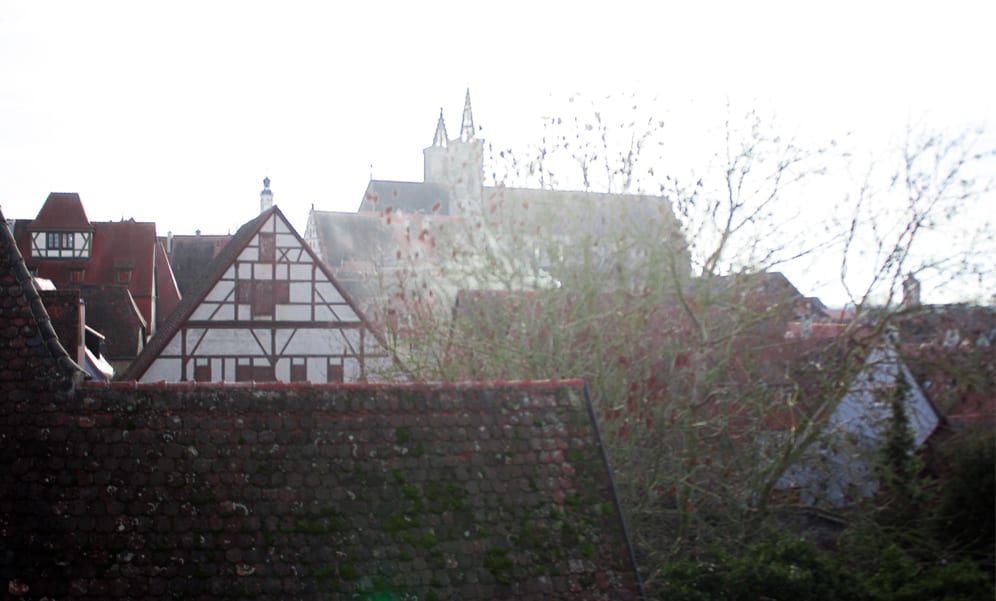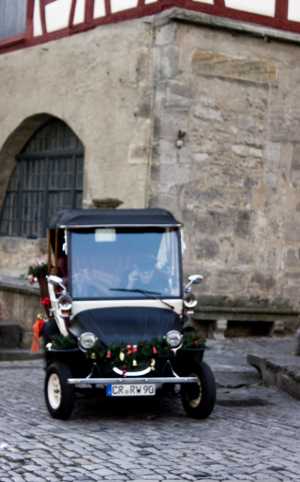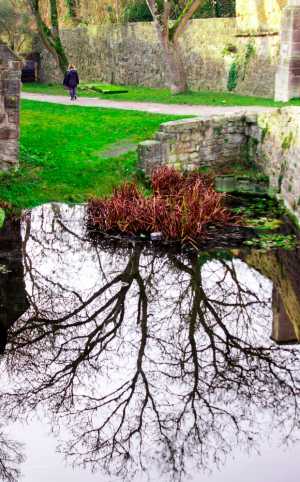Many things are written about Germany but very few people know that this country holds true romantic tows. Such is the case of Rothenburg ob der Tauer, a gem if there is any. Rothenburg has a lot to offer visitors, including photo-perfect medieval views, tons of shopping, and a few interesting museums, amongst others.
A historic, enchanting place. Rothenburg just might be the most beautiful medieval town in Germany.

The Red Fortress above the Tauber
The only thing to do is to engross yourself in medieval life. This place will take anyone to the middle ages and the Renaissance. To take a trip to a thousand years of history that seems to pass in a moment!
Being in the midst of a fortified town is amazing. The view through the numerous arrow slits has been shared by countless generations.
Rothenburg has a unique atmosphere. It is possible to experience it while strolling through the highways and byways the town offers. Before your eyes evidence of the days gone by will flash in every corner: lovingly restored house fronts, fountains, and street signs all provide reminders of everyday life long ago.
Rothenburg is named in part after its location on a plateau overlooking the Tauber River. means “Red fortress above the Tauber”. During the middle ages, Rothenburg was a Free Imperial City and the second-largest city in Germany with a population of 6,000 residents. It was reduced to poverty during the 30-year war. Afterward, Rothenburg was no longer a significant city, and growth stalled, thus preserving its 17th-century state. Today Rothenburg is known worldwide as being Germany’s best-preserved medieval walled town.
It’s one of those places where we felt like we didn’t really see or do anything specific, but enjoyed just walking around the town taking in the sights.

The first thing to do should be to walk the town wall. At 1.5 miles, the medieval wall completely encloses the town’s historic center, giving you a great view of Rothenburg’s half-timbered architecture. As you walk the wall you will see stones engraved with names of people from all over the world. These are people who “bought” a portion of the wall, as a way to raise money to help rebuild Rothenburg after World War II.
As a matter of fact, there is a very interesting reason why Rothenburg was spared complete destruction during the second world war. About 40% of the town was damaged in the war (a very small portion compared to other German towns). Nine of the watchtowers and over 2,000 feet (610 m) of the wall sustained damage. Amazingly, the center of the Altstadt, or old town, went largely unscathed.
A special reason
Rothenburg was bombed by Allied forces on March 31, 1945. However, it was an overcast day and the entire medieval city was not visible from the air.

The allied forces were able to destroy 40% of the city, including 306 houses, six public buildings, nine of the town’s ancient towers, and more than 2,000 feet of the historic wall. Yet, much of the historic center endured.
The night before the scheduled invasion, American General Devers met with the Nazi officer in charge of defending the city.
They negotiated until it was agreed that German soldiers would leave the city in return for an American guarantee that the city would be spared further bombing. As time went by McCloy was later named a patron and honorary citizen of Rothenburg in gratitude.
Continuing with an overview of this medieval treasure it is essential to know when to visit. It depends entirely on what you want. This means that if you want the best weather, spring, summer, or early fall are the best options.
If you want the most festive time, come during the month of December for the Christmas market when everything in Rothenburg is at its busiest.
The most pleasant
The most pleasant activity to do in Rothenburg is to simply take a walk and admire the views. The town is small and easy to stroll on your own. However, you have a lot of options.
It is important to note that early mornings and evenings are the best time to take a walk and avoid other tourists, but note the hours of any sights you want to visit along your stroll.
Getting here is easier than someone would think. This is a German town, meaning that it is possible to arrive and depart via car, train, or bus.
Something that you discover here is that this town has its own rhythm. But, there are two fixed points in the calendar: the historical festival of the 1631 “Master Draught” at Whitsun, the Imperial City Festival in September, and Advent time with the Christmas Market.
This town is an example of outstanding achievements of the German late Gothic and Renaissance. Ideas of reformation arose early among inhabitants of Rothenburg and its surroundings in the Tauber valley. The aftermath of the Peasants’ War in 1525 delayed the introduction of Martin Luther’s doctrine till 1544.

Furthermore, Rothenburg was located at the node of large trade routes and pilgrimage trials. Also, significant representatives of the new belief (protagonists) arrived at Rothenburg during the period of the Reformation. New communication channels, especially the output of the printing press, enabled a quick spreading of information.
Some facts that are intertwined with this city are that: Walt Disney’s Pinnochio received a lot of influence from this town. But as I have discovered: Disney can step aside because Rothenburg truly feels magical. Rothenburg is home to a one-of-a-kind museum in Europe and Germany: The Medieval Crime and Justice Museum as well as the German Christmas Museum.
Feeling Rothenburg means leaving the restless hustle and bustle of contemporary life on the other side of the town walls, and listening to the stories that the buildings, stones, squares, and fountains of times that have passed by. The leaves on the trees in the Tauber Valley turn to gold, complementing the browns of the wooden city gates and the reds of the roof tiles perching on impossibly steep gables.


